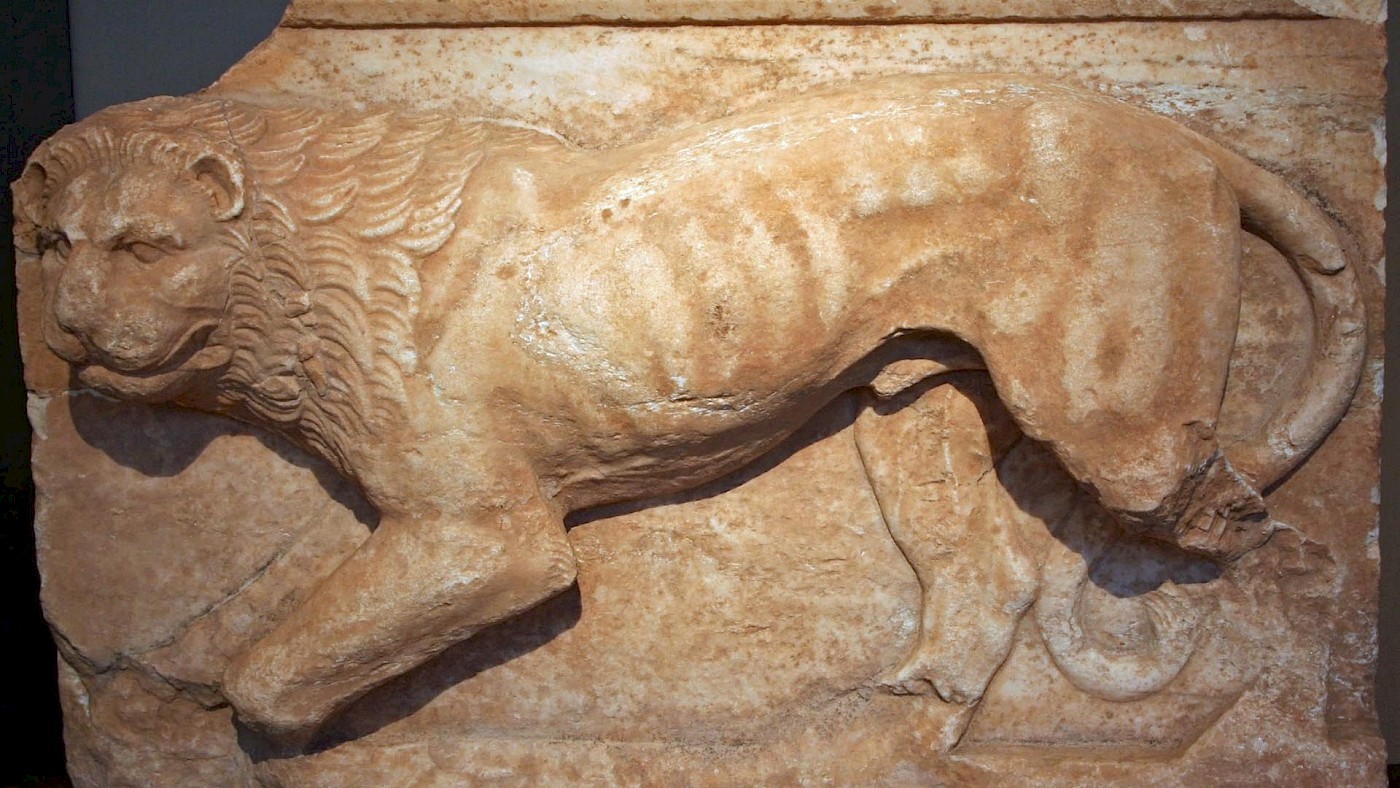Already from an early time onwards, lions symbolized strength and royalty, especially among the kingdoms and empires of the ancient Near East. The British Museum, for example, has a wonderful collection of Assyrian reliefs that depict lions and especially scenes depicting kings hunting lion.
At the Hittite capital of Ḫattuša, most official visitors to the city are thought to have entered via the southwest entrance, nicknamed the “Lion Gate” because it is flanked by protomes in the form of lions. In the words of Trevor Bryce (2002, p. 239):
Their protomes are carved in the round, ready to challenge the city’s enemies and roaring their defiance at any who dare approac with hostile intent. That at least is one way of looking at them. They have become a kind of general symbol of the Hittite world, of Hittite royalty in particular, the physical counterpart of the text-images of a mighty leonine ruler who pounces ruthlessly upon his prey.
Bryce points out that the association with lions and royalty is an ancient one and is also found among the contemporary Mycenaeans, i.e. the Greeks of the Late Bronze Age (ca. 1550 to 1200 BC). The “Lion Gate” at the city of Mycenae dates to roughly the same time as the protomes from Ḫattuša. As with the Hittites, the lions here are thought to be closely tied to the Mycenaean royal family, and Bryce adds that might be considered “the royal coat-of-arms of the House of Agamemon, the first coat-of-arms in the Western world” (op. cit.). See also the interesting paper by N.R. Thomas from 1999, referenced in the further reading, below.
But also long after the fall of the Mycenaean palaces, the lion remained an important animal in Greek art. One of the most interesting early post-Mycenaean uses of the lion in Greek art occurs on the so-called Chigi Vase of ca. 640-625 BC. In his article “Reading the Chigi Vase”, published in Hesperia 71 (2002), pp. 1-21, Jeffery Hurwit has argued that the decoration on the Chigi Vase forms a consistent whole, with each of the different scenes on the pot as kind of a comic-book representation of the life of a young aristocrat. On the bottom frieze, young boys hunt hares, while the frieze above depicts young men fighting a lion. In the top frieze, the men fight the most dangerous prey of all: other human beings.
All of this makes you wonder if lions ever really existed in Europe. We know for certain that lions certainly lived in Anatolia until some point in the past; they may have gone extinct only as the result of actions by the Romans, who captured them for use in the arena. But on the European continent, lions seemed to have gone extinct well before the historical era (e.g. the prehistoric cave lion, fossil finds from the Iberian peninsula and Hungary), with a report by Herodotus about Xerxes’ camels being attacked by lions roaming the Balkans dismissed as fancy (Hdt. 7.125-126).
However, evidence has been mounting that suggests that lions probably did once live in Greece, even though they might not have been common. The main evidence is provided by an increasing number of finds of lion bones. Initially, these finds were dismissed, with sceptics claiming that either the animals themselves or parts of them had found their way to the Aegean basin as a result of trade or gift exchange. But the total number is now so large that this cannot be seriously maintained any more: lions must be counted among the ancient Greek fauna, alongside other predators such as foxes and wolves (for an overview, see: Thomas 2014).
Further reading
- T. Bryce, Life and Society in the Hittite World (2002).
- J. Hurwit, “Reading the Chigi Vase”, Hesperia 71 (2002), pp. 1-21.
- C.H. Roosevelt, The Archaeology of Lydia: From Gyges to Alexander (2009), esp. pp. 169-171.
- N.R. Thomas, “The war animal: three days in the life of the Mycenaean lion”, in: R. Laffineur (ed.), Polemos: le contexte guerrier en Égée à l’âge du Bronze (1999), pp. 297-312.
- N.R. Thomas, “A lion’s eye view of the Greek Bronze Age”, in: G.Touchais, R. Laffineur, F. Rougemont (eds), PHYSIS. L’environnement naturel et la relation homme-milieu dans le monde égéen protohistorique (2014), pp. 375-389.
